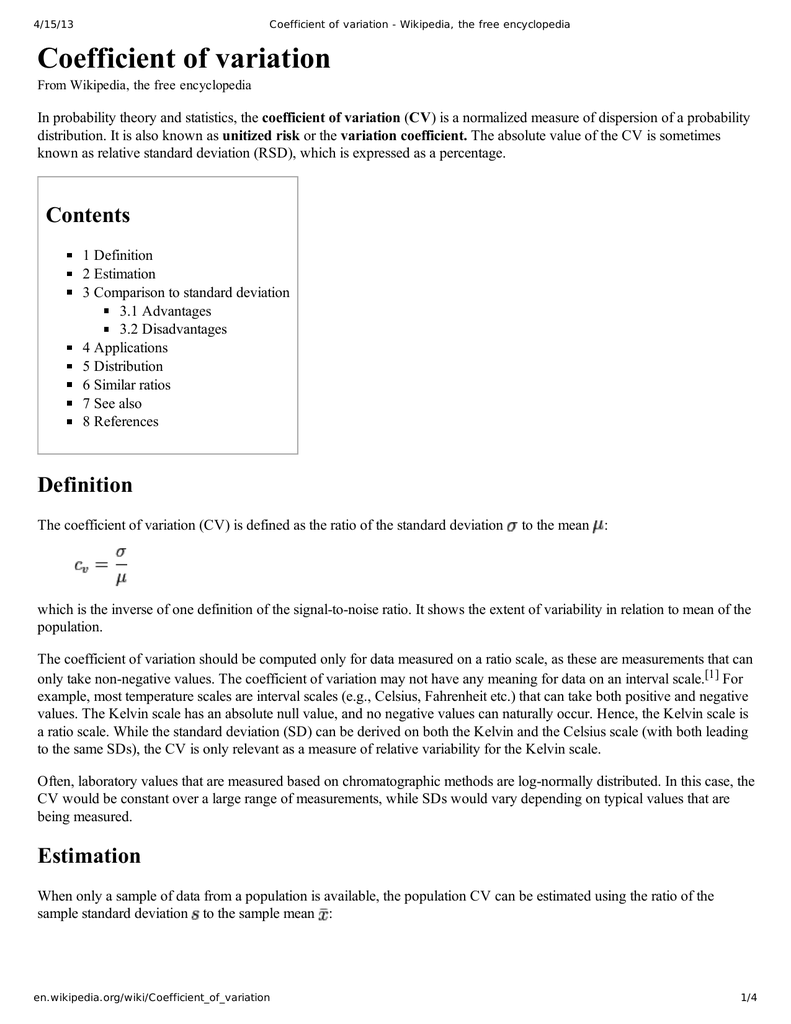In this particular case the test would meet the criteria at the stage 1 thus testing for the next stages would not be required. However the rsd cannot be negative while the coefficient of variation can be positive or negative.

Repeatability And Reproducibility Data Rsd Of The
Is cv the same as rsd. In the laboratory the cv is preferred when the sd increases in proportion to concentration. They both express the variation standard deviation as a of the mean. The first one is obtained by the ratio between the standard deviation and the absolute value of. Coefficient of variation is a measure of relative variability of data with respect to the mean. Therefore one may observe an rsd cv of 20 or more and the resultsproduct would be of acceptable quality for regulatory purposes. Is cv and rsd both are the same.
Coefficient of variation cv and relative standard deviation. The expected high variability rsdcv in results is built in the tolerances. From a conceptual point of view rsd and cv are the same thing. In some cases the coefficient of variation and the rsd are the same thing. It is a special form of the standard deviation which compares the standard deviation with the mean of the given data set and tells you whether the regular standard deviation is small or large when compared to the mean of the given data set. The coefficient of variation cv is defined as the ratio of the standard deviation to the mean.
No doubt the cv coeffcieint of variation is very similar to the relative standard deviation rsd but the only prominent difference between both that the coefficient of variance can be negative while rsd is always positive. Another way to describe the variation of a test is calculate the coefficient of variation or cv. Relative standard deviation rsd. What this tells me that as the mean goes up then does the variation. 1 it shows the extent of variability in relation to the mean of the population. Rsd and cv are the same thing.
Yes if you are referring to coefficient of variation and percent relative standard deviation. The relative standard deviation rsd is expressed in percent and is obtained by multiplying the standard deviation. The coefficient of variation should be computed only for data measured on a ratio scale that is scales that have a meaningful zero and hence allow relative comparison of two measurements ie division of one. Also rsd only tells us a value of the standard deviation it doesnot tell us where that variation is coming from. And if the variation goes up then so does the uncertainty in the measurement system at the higher values. The difference is in the computation.
The cv expresses the variation as a percentage of the mean and is calculated as follows. It is sometimes called relative standard deviation rsd. It represents a ratio of the standard deviation to the mean and can be a useful way to compare data series when means are different.

















